by Vanessa Souli // June 1, 2021
In her multidisciplinary practice, Ivonne Thein focuses on the socio-political dimensions of the human body. In our performance-oriented societies, a growing tendency towards objectification and self-optimization encodes the body as an arbitrarily manipulable mass. In her work, Thein no longer understands the body as a whole, but rather as a fragmented being. With this fragmentation, she discovers new potential with regard to transience, gender, post-humanism and body image in the digital age. Installation, video, photography and sculpture are the media she uses to portray the complex relations of the body to various societal discourses and to open the dialogue about issues that have seemed “private” or too “intimate” to be discussed in public. In this aspect, Thein’s unparalleled visual language leads to work that is in equal measure political and compassionate.
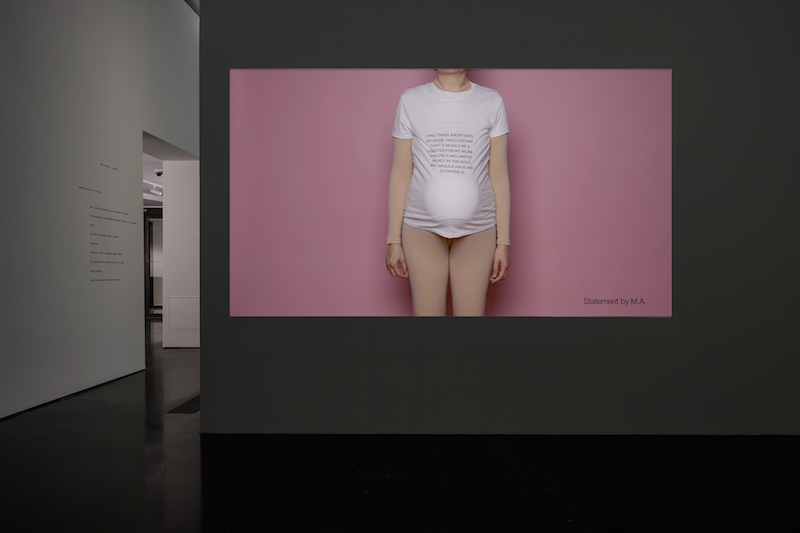
Ivonne Thein: ‘7 steps to become a good mother and remain a good artist, ‘2018, 1 channel video installation, installation for DEW21 Art Prize, Dortmunder U, Dortmund // Courtesy the artist
Vanessa Souli: How do you treat intimacy in your work?
Ivonne Thein: For me, intimacy doesn’t exclusively refer to what we conventionally call the “intimate.” Intimacy mostly refers to the relations we have with our bodies and how this extends to form a taboo or cliché in our society. I think that intimacy can be a barrier to talking about important social problems as long as it’s seen as a synonym of “private” and therefore hinders the exposure to these taboo issues, for example, aging, mental illness, gender issues, violence against women or even birth and motherhood.
That certainly has to do with our performance-oriented mindset, where a sick or old body is not as efficient as a young, healthy body and therefore doesn’t deserve to be equally shown. One of the works that deals with this issue is ‘disobedient bodies’ (2014-2018), where I confront the viewer with photographic images of sick or old bodies and combine them with artificial body parts or aids that support body optimization. I see these photographs as an alternative to the hyperreal, perfect body images that we encounter every day in the media. Photography plays a major role in the distribution of idealized body images, as the flood of images keeps fuelling the dream of a young, healthy and flawless body. I see intimacy as both a tool for making art and for gaining access to certain “public” problems.
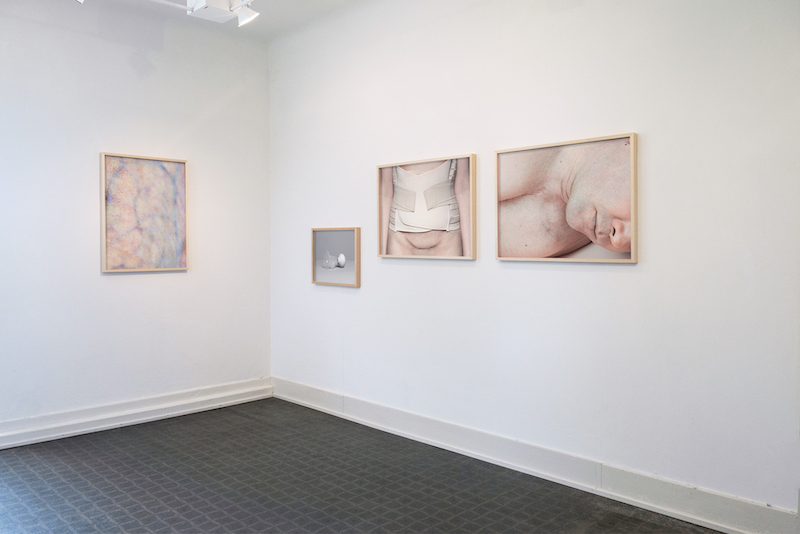
Ivonne Thein: ‘disobedient bodies,’ 2014-2018, installation for Beyond the Skin, Museum Villa Rot, Burgrieden // Courtesy the artist
VS: Do you think intimacy is a value that applies to sociopolitical issues?
IT: I think that our idea of intimacy or privacy can often prevent debate in a socio-political context. For example, when we talk about domestic violence cases against women, we often refer to them as “private situations” or “hard family circumstances.” Domestic violence against women is seen as an isolated incident and too intimate to speak about in public. As a woman and artist, I see this very critically, because the lack of public attention on the subject ultimately only protects the offender. This year I made the work ‘him’ (2021) to give this issue a bigger stage. It’s a mixed media installation with a mattress, a blanket from artificial hair, a large wallpaper, two pillows with skin photo prints and a two-channel video. In ‘him,’ I address the fine line between everyday disputes within the family to violence against women in the domestic environment. Too often, women are made complicit by society, either because they provoked too much or endured too much. In the social debate on the subject, one often gets the impression that the men who beat their wives are in reality victims. This has a lot to do with the patriarchal structures that still prevail.
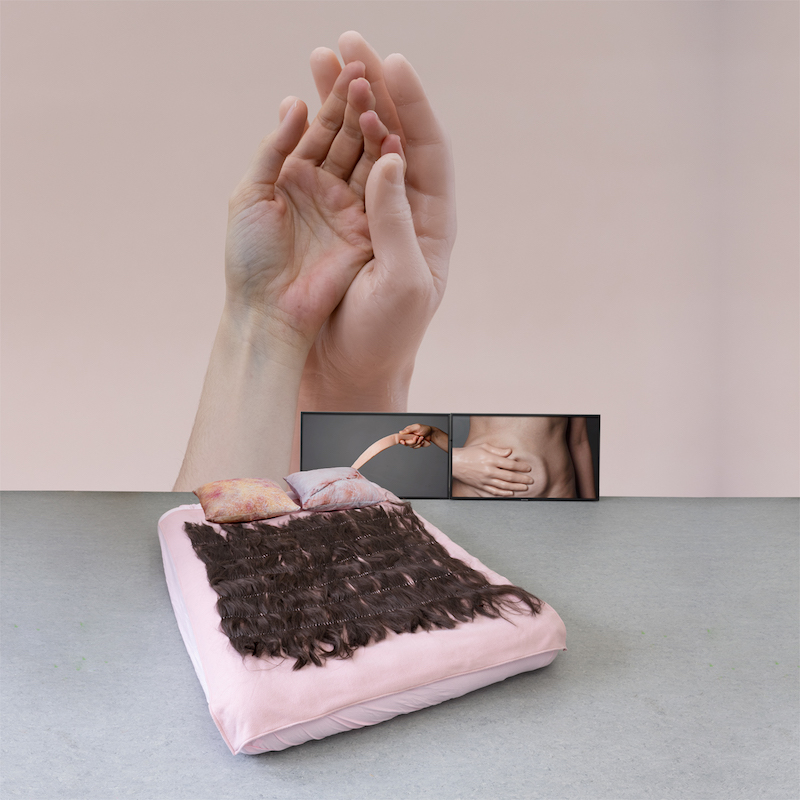
Ivonne Thein: ‘him, ‘2021, mixed media installation // Courtesy the artist
VS: Your work is quite political. Do you see a chance for intimacy between the work and the viewer?
IT: I think yes, but this depends very much on the background and the openness of the viewer. Some of my works can trigger very strong feelings, sometimes with negative connotations. I would definitely consider a reaction an intimate moment because it describes the point of confrontation between the work and the viewer’s perceptions.
VS: How do you see intimacy in the digital age?
IT: I think that our notion of intimacy undergoes a fundamental shift in the digital age. The permanent self-presentation has led to the fact that we share more and more private information with a large audience. The social pressure to make all this information available to everyone is growing. Above all, social networks like Instagram or Facebook, but also TikTok, fuel this urge to share intimate moments and optimize our virtual selves. Intimacy is really about the question of how we can control our privacy and how to keep it separate from our professional / social life, given the power of these media.
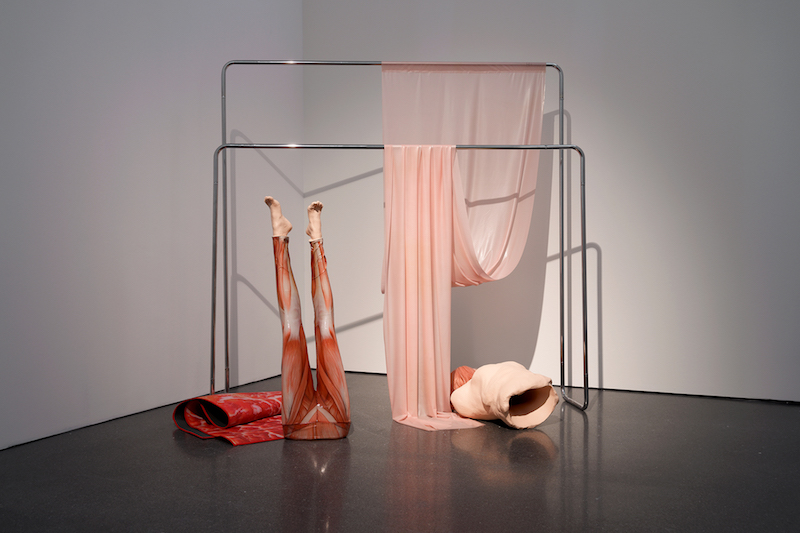
Ivonne Thein: ‘I feel much better since I stopped eating chocolate,’ 2019, mixed media installation, installation for DEW21 Art Prize, Dortmunder U, Dortmund // Courtesy the artist
VS: How do you see the definition of the body changing under the influence of technology?
IT: In the era of Covid-19, where the body has come to the point of being considered a public danger and a mediator of contagious diseases, and with people spending more and more time online, the definition of the body itself seems to be changing. In the series of works ‘untitled body,’ I thematise the question of what the limits of these technologies are, in how they influence our perception of our own bodies
Another example is ’embodied,’ a 2:18-minute video with sliding images created by AI. In a processual collaboration with the AI, 17 individual images were created, which were then animated in a video using morphing. I first trained the AI with my own image material and then generated new images on the basis of this learned knowledge. I provided the AI with a sketch for each image, as well as a photograph as inspiration for structure and color. The resulting body images are fragmentary hints that suggest individual body forms. The work directly refers to the limits of the pictorial representation of the human body in the context of digital image techniques.
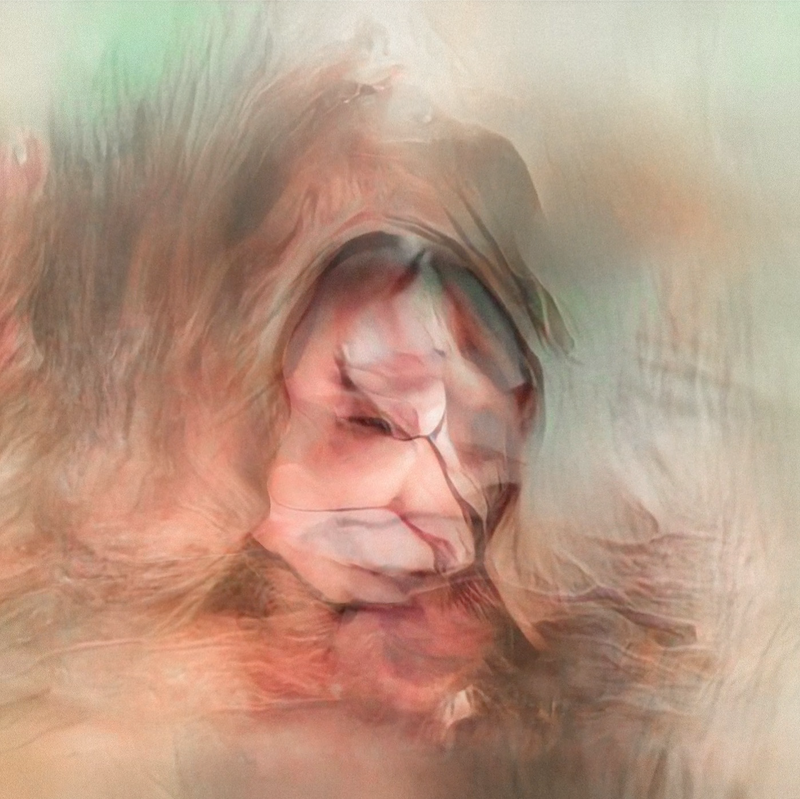
Ivonne Thein: ’embodied,’ video still, 4K video-loop, no sound, 2:18 min. // Courtesy of the artist
VS: What would be, for you, a new, more suitable way to view the body rather than as a “manipulable mass”? Do you envision a new definition of the body in the posthumanist era?
IT: I think it would be good to find a less externally-shaped self-image again. Ultimately, it would help to focus on things that promote our well-being and good interpersonal relationships. From my point of view, we cannot stop the technological developments that affect or expand our bodies; the desire to constantly change and improve will automatically bind us physically to them and thus push the biological limits of our bodies further and further.
In my works, ‘how to not be seen as a body I & II,’ my focus lies on “producing” body parts that seem organic but are nonetheless synthetic. Being interested in the fragility and transformability of the body, I am exploring artificial body parts and forms as a tool to investigate the material properties of the body and therefore test the boundaries of its physicality. Maybe a less present, more fragmented body is the new definition in the post-humanist era.
This article is part of our feature topic of ‘Intimacy.’ To read more from this topic, click here.
Artist Info
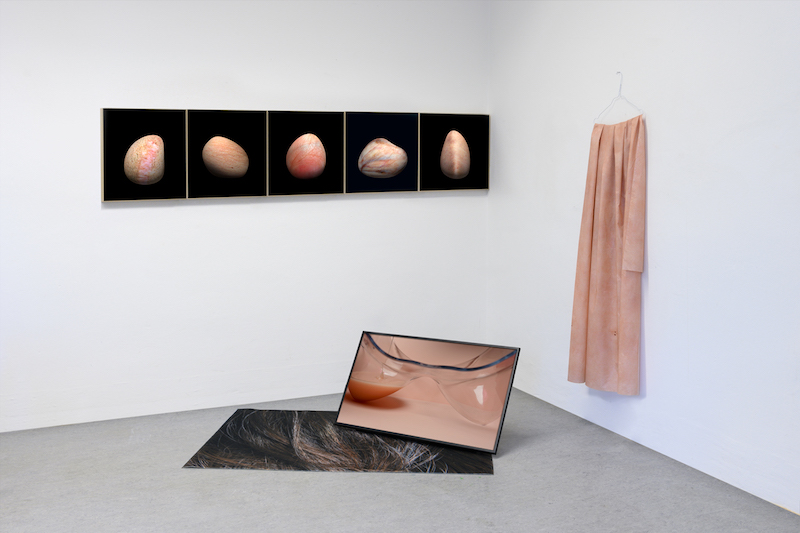
Ivonne Thein: ‘how not to be seen as a body I,’ 2020, mixed media installation // Courtesy the artist

























